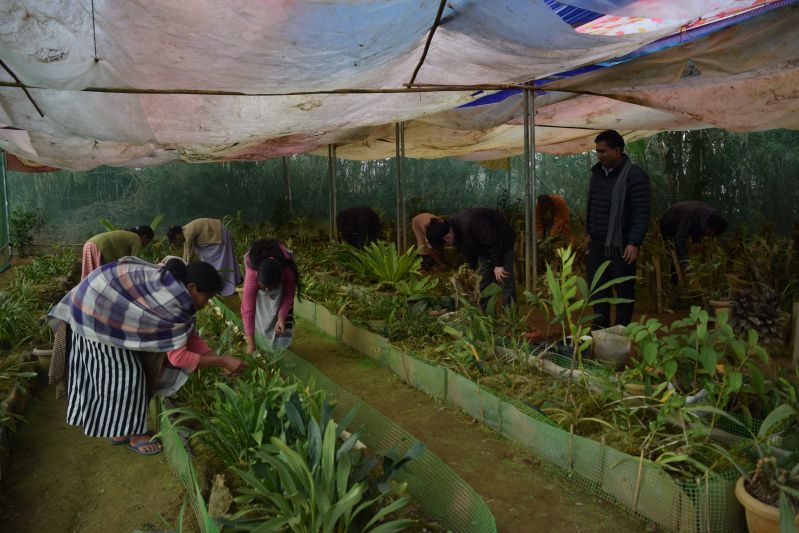
On 5th June, 2015, the occasion of World Environment Day, 'Nonglwai Orchid Conservation Society' was conferred with a prestigious state award for their tremendous environmental services through the conservation of indigenous orchids. The driving force behind this society is Charles Tympuin.
It all began when Mr. Charles, who is a school teacher in Jaidoh, decided that he wanted to make the most out of the time he has outside of teaching. He felt that he had the potential to do more for himself and his society but he just could not find an avenue to start something. One day as he was taking a walk to his friend's house he decided to take a short cut through the forest. As he was walking, he realized that the forest had an abundant number of wild orchids growing all over. He took a few of the flowers to the market just to see what they would fetch. He was surprised by the response of the people. There was a huge demand for indigenous orchids yet there were hardly any sellers there.
So began his search for indigenous orchids in the forest to sell in the market. A number of people in his village also started collecting wild orchids, following in the footstep of Mr. Charles. It became a source of livelihood for many and an additional source of income for Charles. He would make anywhere between Rs. 1000 - 1500 per day by selling orchids. It was a very good source of revenue for him. In fact he was finally even able to make long due repairs to his house using the money he earned from selling wild orchids.
This activity continued for many years until one day when Mr. Charles realized that the orchids are beginning to disappear. He realized that simply harvesting wild orchids to sell in the markets was unsustainable, both for the local environment and for the sellers. He had to do something to preserve this source of livelihood. This was when he decided to grow and preserve these indigenous orchids in his own garden. He also encouraged his friends to do the same. In 2011, he mobilized these friends to form 'The Nonglwai Orchid Conservation Society' and took onhis present role of general secretary.
As demand increased, the members decided they required formal training to better manage their orchid production. They approached the IBDLP Basin Development Unit (BDU) at West Khasi Hills for assistance. Soon after registration, the BDU provided them with training on pest management and in-situ cultivation. The BDU also facilitated an exposure visit for society members to the National Research Centre for Orchids in Sikkim. There they received training and capacity building for identification and further propagation of the species.
Today, the society that Mr. Charles started has conserved more than 3,000 plantlets of indigenous orchids. Experts from the Bio-Resources Development Centre (BRDC) in Shillong, a research and development institution under IBDLP, have already identified 70 species conserved by this society. Additionally, the society also grows hybrid species in large numbers which are sold as cut flowers. Charles and his friends hope that their efforts create awareness about the importance of preserving the indigenous species of Meghalaya and also provide a strong example for how the rich biodiversity resources of Meghalaya can be sustainably leveraged to create profitable livelihoods for people as well.